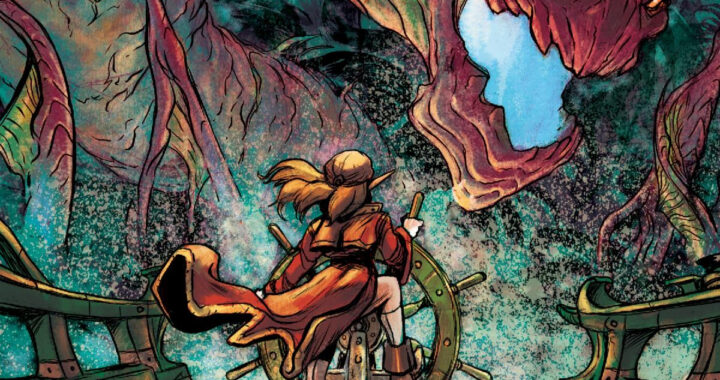
Review: Luke Cage – Everyman Chapters 1 & 2
 The figure of the “everyman”“ in literature is almost as old as the concept of literature itself. “Everyman”“ is the character with whom audiences and readers can easily connect; he is the ordinary guy placed in an extraordinary set of circumstances. As the canon of literature expanded to include more voices in the late stages of the 20th century, the notion of who could be an “everyman”“ had to expand as well.
The figure of the “everyman”“ in literature is almost as old as the concept of literature itself. “Everyman”“ is the character with whom audiences and readers can easily connect; he is the ordinary guy placed in an extraordinary set of circumstances. As the canon of literature expanded to include more voices in the late stages of the 20th century, the notion of who could be an “everyman”“ had to expand as well.
The evolution of Marvel“s Luke Cage ”“ over the last decade especially ”“ has been about the ways in which representation in comics has had to shift ”“ from stereotypical tokenized characterizations into more fully fleshed out and well-rounded characters (in comic book stories that more accurately reflect the range of identities in the real world). Anthony Del Col, Jahnoy Lindsay, Ian Herring and company are delivering all of this and more in their Marvel Digital Originals“ take on the Luke Cage universe. The title of their story arc is “Everyman.”“
Del Col is a deft storyteller. His Luke Cage is slightly more humble than the Netflix version. The Luke Cage of “Everyman”“ seems to be wizened in ways that only the character“s comic book experiences could produce. Some of the most poignant panels in the first two issues of the miniseries are Luke“s interactions with his daughter, Danielle. Like so many of the best-written comics in this moment, Del Col“s depiction of family ”“ in this case the interactions between a father and his daughter ”“ are the glue of the story. In order for readers to fully appreciate the personal and professional dilemma that Luke Cage finds himself in, his relationships have to matter. And in this story, they do.
The meaning of “Everyman”“ is multifaceted for Del Col and the rest of the creative team. Artistically, it means that Lindsey“s interpretation of Luke Cage is simultaneously quirky, impressionistic and authentic. But somehow the overall sense of realism required for the story world of Luke Cage is completely intact. And Del Col“s concept of the “Everyman”“ might be the antithesis of the literary figure“s origins. “Everyman”“ is the antagonist of this story arc and by the end of issue #2 readers still don“t really know who this mysterious and murderous villain actually is. Can the “everyman”“ of literary lore actually be the bad guy of the story? Del Col says yes and many many readers will agree given the “99%”“ underpinnings of the villain“s signature.
Ultimately Del Col“s powerful story about Luke Cage won“t allow readers to make easy decisions about who constitutes the “everyman”“ in this narrative. The villain may call himself an everyman and he may represent those who Harlem has economically left behind. But Luke Cage is facing the most daunting personal challenge he has ever faced as a character, the kind of challenge that knows no class or skin color. And in that sense he too is just like everyone else. 4.5/5!
[yasr_overall_rating size=”large”]
Story: Anthony Del Col Art: Jahnoy Lindsay Color: Ian Herring
Buy it HERE
Author Profile
Latest entries
 Comic BooksFebruary 27, 2020Review: Fax From Sarajevo: A Story of Survival
Comic BooksFebruary 27, 2020Review: Fax From Sarajevo: A Story of Survival Comic BooksFebruary 13, 2020Review: BOX OF BONES #1
Comic BooksFebruary 13, 2020Review: BOX OF BONES #1 Comic BooksJanuary 16, 2020Review: HEARTTHROB Season Three #1
Comic BooksJanuary 16, 2020Review: HEARTTHROB Season Three #1 Comic BooksJanuary 8, 2020Review: EXCALIBUR #5
Comic BooksJanuary 8, 2020Review: EXCALIBUR #5






